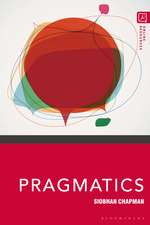Neuromimetic Semantics: Coordination, quantification, and collective predicates
Autor Harry Howarden Limba Engleză Hardback – 7 mai 2004
·The discovery of several algorithmic similarities between visison and semantics.·The support of all of this by means of simulations, and the packaging of all of this in a coherent theoretical framework.
Preț: 954.23 lei
Preț vechi: 1307.17 lei
-27% Nou
Puncte Express: 1431
Preț estimativ în valută:
182.59€ • 198.96$ • 153.86£
182.59€ • 198.96$ • 153.86£
Carte tipărită la comandă
Livrare economică 23 aprilie-07 mai
Preluare comenzi: 021 569.72.76
Specificații
ISBN-13: 9780444502087
ISBN-10: 0444502084
Pagini: 554
Dimensiuni: 165 x 240 x 26 mm
Greutate: 1.12 kg
Ediția:New.
Editura: ELSEVIER SCIENCE
ISBN-10: 0444502084
Pagini: 554
Dimensiuni: 165 x 240 x 26 mm
Greutate: 1.12 kg
Ediția:New.
Editura: ELSEVIER SCIENCE
Public țintă
This book is designed primarily for the benefit of linguists, and secondarily for logicians, neurocomputationalists, and philosophers of mind and of language. It may even be of benefit to mathematicians. It will certainly be of benefit to all those that want an introduction to natural language semantics, logic, computationational neuroscience, and cognitive science.
Cuprins
Contents Preface.Acknowledgements.1. Modest vs. robust theories of semantics.2. Single neuron modeling.3. Logical measures.4. The representation of coordinator meanings.5. Neuromimetic networks for coordinator meanings.6. The representation of quantifier meanings.7. ANNs for quantifier learning and recognition.8. Inferences among logical operators.9. The failure of subalternacy: reciprocity and center-oriented constructions.10. Networks of real neurons.11. Three generations of Cognitive Science.References.Index












